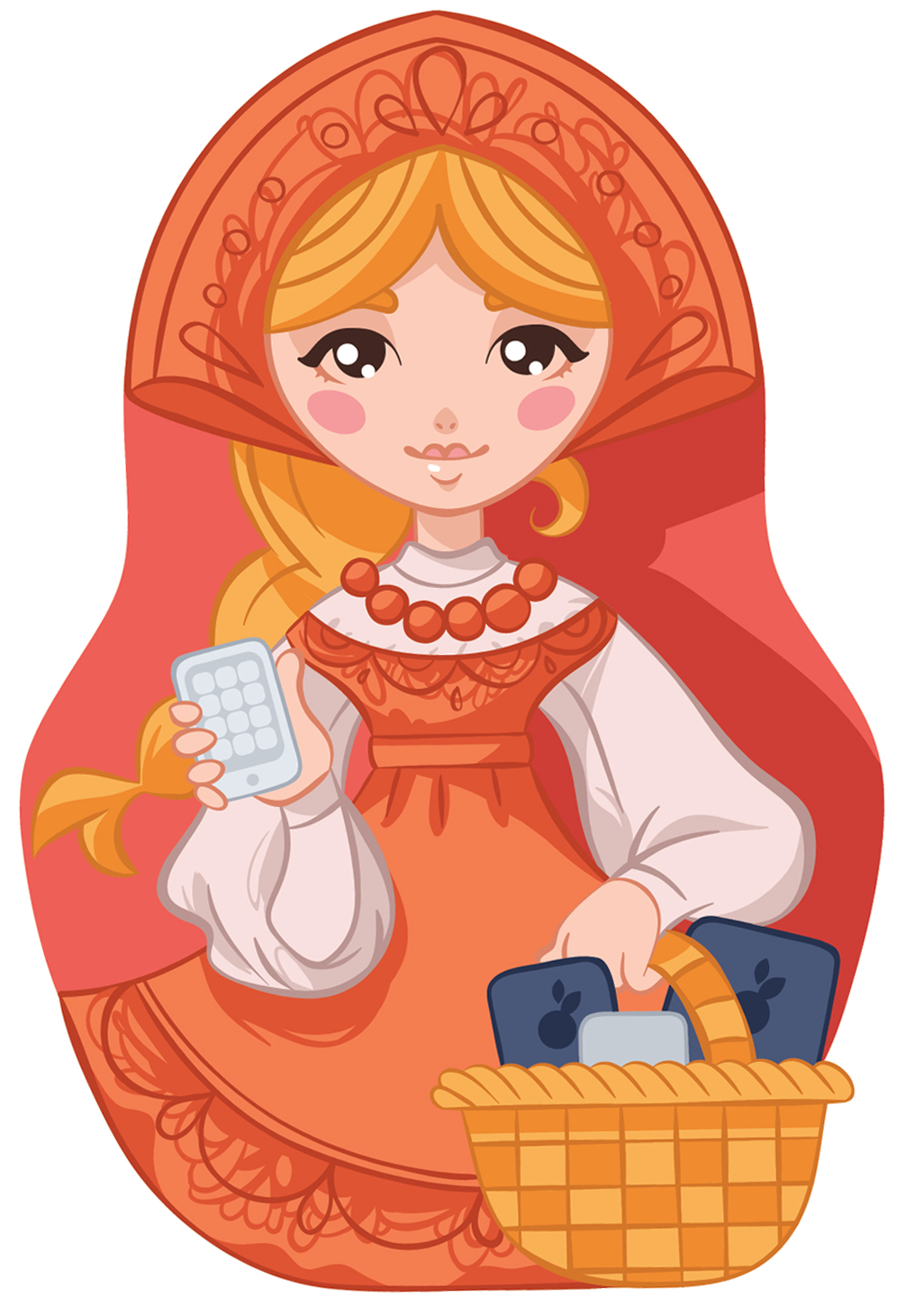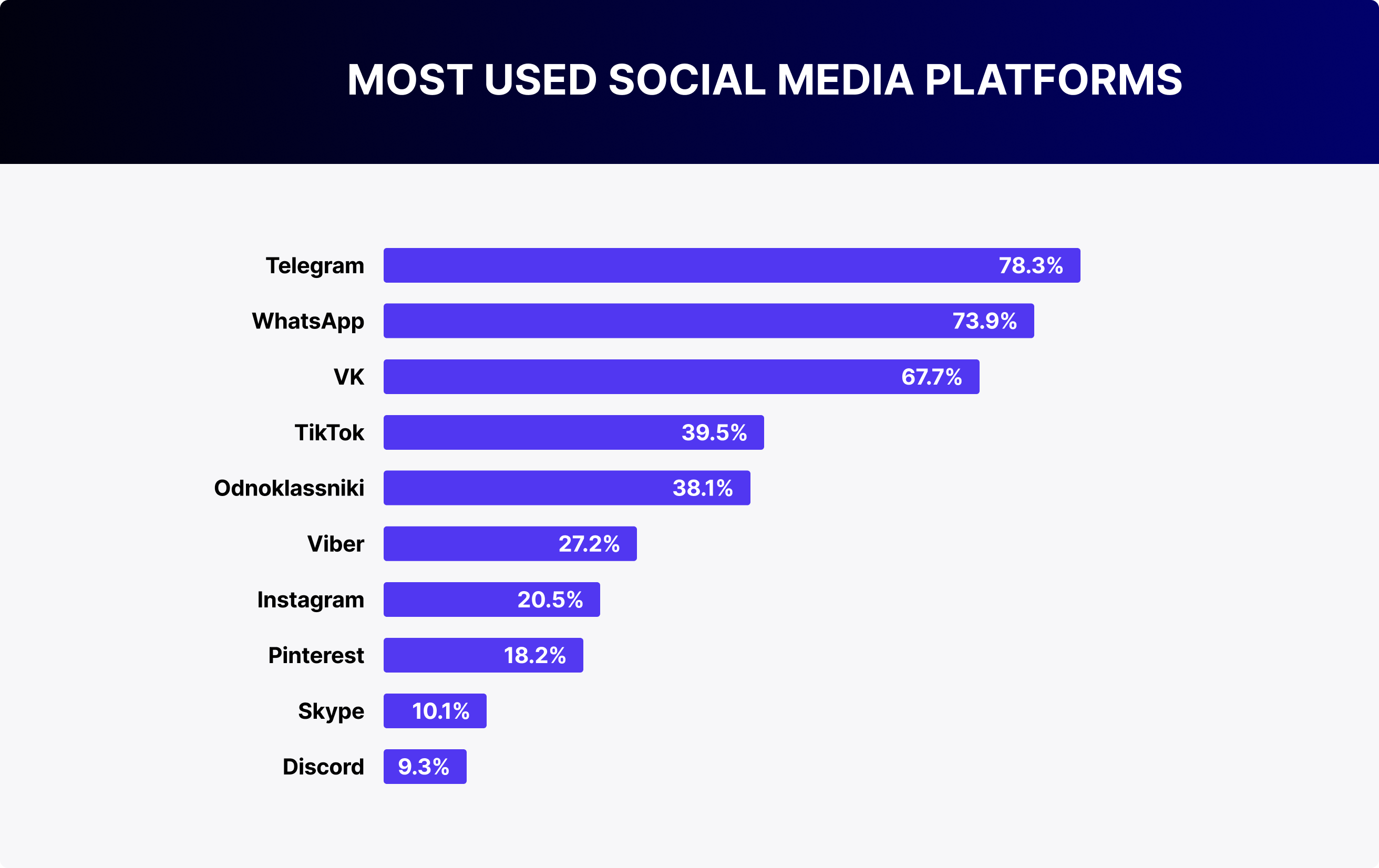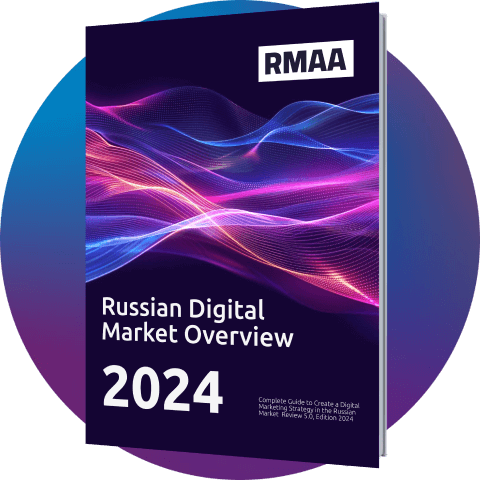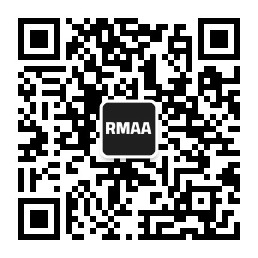Blog about successful marketing strategies in russia
Telegram Ads Example & Ideas for the Russian Market: Direct and Native Formats


DIGITAL MARKETING
Share this Post
Telegram has become the leading social platform in Russia, used by over 78% of the country's internet users. For international brands entering the Russian market, the messenger offers a reliable communication channel, especially given the restrictions on other social media platforms. But before deciding between direct ads and native integrations, it's essential to understand: what made Telegram such a key platform for brands in the country?
Why Telegram Became a Priority in Digital Strategies Across Russia
Since 2022, Telegram hasn't just attempted to replace Instagram and Facebook (both banned in Russia. It has taken a central role in the digital lives of Russian users. Today, the platform counts over 106 million users, with 78.3% of all internet users in the country actively using Telegram.

The average time spent on the app keeps growing and now exceeds 40 minutes per day. Telegram’s audience is mature, financially capable, and mobile: over 30% are aged 55 and older, with a median age of 40.3 years.
For international brands, this means a rare opportunity to connect directly with users, bypassing channels that are either restricted or no longer accessible. But choosing the right approach to entry is key.
There are several options for running campaigns in Telegram. Starting from using the Telegram Ads service, Yandex.Direct contextual advertising, creating your own channel in the messenger, and ending with integration with the channels of popular bloggers. In the first two cases we are talking about paid ads, which has its own advantages and nuances. In the other two cases, successful promotion directly depends on finding channels for integration and creating high-quality content for them.
When and Why a Brand Should Opt for an Ad Integration or Telegram Ads
Ad promotion method on Telegram directly depends on the chosen promotion strategy: integration, seeding, Telegram-campaign though Yandex.Direct or posting messages through the Telegram Ads platform. At this, there are a huge number of messenger channels, in which you can easily get confused. Plus, thematic user chats are gaining popularity. Of course, there is a great temptation not to waste time studying channels and just buy targeted advertising in Telegram Ads. However, from our experience, there are particular cases when only advertising integration is strongly recommended for brand promotion.
The first particular case is if the brand does not have its own Telegram channel or bot. But it is in dire need to promote the website in the “the faster, the better" mode. In this case, only advertising integration will be appropriate. Connecting ad platform will not work quickly (it can be done only if there is a bot, channel and published content). And creating Telegram-channel will not be fast either, judging by successful cases of other companies.
For example, the famous Russian beauty blogger Adele Miftakhova spent several years on the “promotion” of the Don't touch my face channel. The success of the Mash news channel is also the result of continuous work on it since 2017. In short, if the promotion requires operational work, it is better to use integration with existing telegram channels, and, at the same time, work on your own Telegram channel.
Since, its presence without content and a bot will still not allow you to launch a campaign through an advertising platform. The point is that Telegram Ads has its own restrictions with regard to channel topics and content. It should be at least 5-6 published posts in terms of content. Everything, related to bans, is much more complicated. Advertising of alcohol, tobacco products, even fast food, etc. will definitely not pass moderation. And, if a company is under EU sanctions (for example, Sberbank), there will be also rejection.
In addition, there are limits on the content. Ads on the official platform must contain up to 160 characters, without links to third-party resources. In case if a company needs more detailed longreads with transitions to the website, then it can be possible only through integration with bloggers or seedings in other channels.
Also, there is another important point that became relevant in the summer of 2022. It is related to the premium subscription of Telegram users. The messenger will not show ads published via Telegram Ads for such accounts. That is, if a brand already has its own channel and wants to launch promotion through this advertising service, you need to be sure that its audience does not consist of premium users. Otherwise, it will be a waste of the advertising budget and lower results from the campaign compared to the above mentioned integrations and seedings.
By the way, the cost of an advertising campaign in Telegram Ads is so much more expensive than any other type of promotion on Telegram (the initial budget is about 3,000 euros). Therefore, before working with the platform, you need to be confident in all aspects (budget, audience, compliance with general advertising requirements, channel content, bot, etc.).
Although Telegram doesn't yet offer detailed geotargeting, this issue is partially addressed through the interface language and the topics of channels popular in specific regions. Thus, even without direct geographic targeting, you can still reach the right segment.
At the same time, Telegram Ads is appealing because it offers precise targeting capabilities meaning a more meaningful connection with the audience.
One of the key tools is language selection. This is especially useful for international companies: you can target the Russian-speaking audience directly or, conversely, target other groups based on their language preferences.
Another important parameter is the channel topics. Ads are shown within categories that match your audience's interests. This approach not only makes the placement more relevant but also more effective — users see ads in an environment that is familiar and relevant to them.
Although Telegram doesn't yet offer detailed geotargeting, this issue is partially addressed through the interface language and the topics of channels popular in specific regions. Thus, even without direct geographic targeting, you can still reach the right segment.
An interesting feature is the behavioral analysis mechanism. Telegram tracks which channels a user subscribes to and what topics they are interested in, and based on this, shows ads to those who are most likely to be interested in your offer.
Thanks to this approach, ads on Telegram reach those who are genuinely interested in the offer with no unnecessary noise and at the right moment.
Another option for running campaigns in Telegram is to launch ad integrations.
Before launching any campaign, it’s essential to perform a thorough channel audit. Start by examining viewership metrics and then assess other key indicators—bot-to-human subscriber ratio, engagement rate (ER) and cost per view (CPV). You can obtain all of these figures from specialized marketplaces that catalogue Telegram channels (for example, telega.in) or by requesting detailed analytics directly from the channel owner.

Let's say that you have already had a list of selected channels for integration and they all have good indicators. The next step is to work out the advertising integration. From the perspective of the format, it will look like a standard messenger post, but with its own features. Let's talk about this in more detail.
Advertising Formats on Telegram: Direct and Native Delivery
Telegram is an independent media environment with its own content perception rules. The same message, presented differently, can either succeed or fail completely. That's why it's important to understand: on this platform, it's not just what is said, but how it is said.
What’s important to understand!
Integration is the method of placement, while native style refers to the way the message is delivered.
On Telegram, ads can be placed manually through channel owners (integrations), automatically via Telegram Ads, or in bulk via Yandex.Direct. Regardless of the placement method, posts can take different forms:
- Either as direct advertising (a brand offer);
- Or as a native story (in the channel's style, by the author).
Let’s dive deeper into how direct and native integrations differ, when each format should be used, and why the choice of presentation can affect the campaign results just as much as the content of the offer itself.
Direct Advertising: When Quick Results Are Needed
Direct advertising is clear and recognizable, with a clear positioning, usually coming directly from the brand. This format is ideal when the goal is to get an immediate response: visiting a website, downloading, registering, or completing a purchase. It works well for promotional campaigns, launching seasonal collections, offering bonuses, and sales.
A promotional post like this on Telegram is almost the same as posts on other social media. It has four main parts.
Heading, the main task of which is to draw the user attention to the post. The most effective format for it is a question (How to study online for free?) or an interesting fact (News for those who want to study. And for free.). You can also add emojis here or highlight the text, for example, in italics. The main thing is not to overdo it and that all the elements of the message look harmonious with each other.
Main part with offer details and the advantages of the product can contain up to 4096 characters, providing that there is a graphic image at the bottom ( if an image is at the start of the text, then the limit of the main part is 1024 characters) or no image at all. Note that when creating the main part of the message, there is no “recipe” for how to make it more effective. It all depends on various criteria. On the one hand, Telegram is a news resource, therefore long posts with lots of characters are not bad, they are read. On the other hand, it depends on which audience they will be written for. If the integration takes place in a channel where the main part of the posts contains about 500-700 characters, then most likely subscribers will not read the 4000-character text. But, again, each situation needs to be considered individually.
Сall to action is usually written after the main part of the post. It contains a link to the resource that is advertised (for example, a link to the official website of the company or webinar registration) and may look like a short, motivating phrase. Moreover, in the post there is an opportunity to place several links at the same time. It means, one of them can be a phrase, the other goes separately. And add a UTM tag to analyze the effectiveness of advertising after the entire campaign.
Image, as we said above, can be at the start or at the end of the publication. It is required to highlight a post in the channel feed and “grab” the attention of users.
How does it all interact with each other? When creating any ad post, there should be the following logic: a user sees the image, he is interested in it. After, he looks in more detail, starting with the topic in the heading. Then, he reads the main part. If he is into the product involved, he will use a link to a third-party resource. Besides, the heading and image can be optional, and the post can start straight with the main text without an image. And all these cases can be effective, which is not insignificant.
New provisions on labeling internet ads have been introduced into advertising legislation in Russia since 2022, including for Telegram channels. We created a detailed guide with examples on this topic. In other words, any promotional post on Telegram must include the label Advertisement, an advertising token label, and information about the advertiser.

Because the message is so direct, the post works well—it clearly asks people to buy the product or service. When it targets an audience already interested in the product, it has a very good chance of success. In direct ads, the product and its benefits are usually explained in more detail.
When publishing direct ads, keep in mind they can become intrusive for several reasons. For example, if you use the same template in multiple channels at once, or if a channel’s content consists exclusively of promotional posts. It’s also unwise to work continuously with the same channels on a permanent basis. To make your promotion more effective, avoid these situations and create a unique creative for each integration.
Native Telegram post for promotion
Native Integration is an advertising format where the post is adapted to the style and voice of the Telegram channel, often published by the author. This content blends seamlessly into the regular feed, rather than appearing as obvious advertising.
It’s one of the types of integration — manual placement of ads in a Telegram channel. Unlike seed marketing, native advertising requires deep adaptation of the text, delivery, and format.
It means that it can be both an audience that is already interested in the product, as well as new users. The main feature of a native publication is that the brand mention is minimized (a link or short explanation of the offer).
The brand here has several advantages. First and foremost is a high level of engagement: users are more likely to respond to content that doesn’t look like direct advertising and builds trust. The format remains flexible. You can present it as an expert, journalist, or even a product tester. Telegram allows external links as well as long reads with illustrations, offering more freedom in presentation. Another important benefit is the lack of strict text length limitations: a single post with an image can contain up to 4,096 characters.
This advertising format works particularly well in the following segments:
- Beauty and fashion — through storytelling, reviews, user experiences;
- Tourism and air travel — through route descriptions, impressions, and tips;
- Technology and innovations — through test drives and expert reviews.
For example, in 2024, Aviasales launched an advertising campaign on Telegram through its own channel and influencer integrations. Posts began with the problem — expensive tickets — and offered a specific solution + bonuses for channel readers. With influencers, it appeared as if the ads were simply a part of their lives.
Native advertising also has its limitations. It requires more subtle adjustments: the marketer must adapt the style, tone, and structure of the text to fit the specific channel so that the post doesn’t seem out of place. At the same time, native posts often feature less direct information about the product. The focus is on the story, emotion, or problem, rather than on features and benefits. Good native advertising isn’t just a description of a cream, but a story where the cream fits naturally: as a continuation of an experience, mood, or life situation.
For native advertising to work, it's essential to consider not only the content but also the form. What will it be?
- A piece of personal experience?
- A small observation with advice?
- A comparison of two approaches?
- A dialogue?
Telegram favors concise formats, but with internal logic. Texts in the style of ‘I tested it and now I’m sharing’ are already outdated. In 2025, readers value texts that read like a natural continuation of their usual feed — calm, convincing, and without any pretense.
Moreover, if a channel author publishes branded content too often, especially in the same style, the audience starts to recognize repetitive advertising structures. This lowers trust both in the content and in the product. That's why it’s important to carefully select channels for integration: monitor not only the reach but also the frequency of ad placements, engagement rate (ER), presentation style, and the audience's reaction to previous posts.
Direct or Native Advertising: Which Format Works Better on Telegram
There is no universal formula: it all depends on the campaign's goal, budget, brand awareness stage, and topic. Below is a brief comparison to help determine which format is more effective to use.
| Situation | Direct Ads Suitable | Native Integration Suitable |
|---|---|---|
| Quick launch | Yes | No |
| New brand promotion | Partially | Yes |
| Repeat campaigns | No | Yes |
| B2B promotion | Partially | Yes |
| Promotion via stories/case studies | No | Yes |
| High CPA | Yes | Yes, but with optimization |
It’s worth noting that direct advertising provides a quick response but is less effective for building long-term trust. Native advertising, on the other hand, requires more nuanced adjustments but ensures a seamless integration into everyday content consumption. Often, the optimal strategy is not choosing one format over the other, but a smart combination of both within a single communication line.
What to consider when advertising on Telegram in 2025
Regardless of whether you choose native or direct advertising, there are some general recommendations for publications.
Budget: think about payback of your posts. In 2025, the effectiveness of a post on Telegram is not determined by how long it stays in the feed, but by how well it reaches the prime audience and is adapted to the specific channel.
The post’s reach is formed within 1–3 hours after publication, but engagement continues for 3–5 days, especially if the post includes reactions, buttons, call-to-action, or mini-bots. Instead of relying on outdated formats like 1/24 and 2/48, brands should focus on the actual activity of subscribers and the channel's engagement rate (ER of 10% or higher is considered a good indicator).
Content should be unique for each channel. Cross-posting with different text, angles, and visuals works better than duplicating a single post. In a Telegram strategy for launching a brand, it's better to plan for 5–7 integrations with different styles right from the start.
Visuals are relevant both at the beginning and the end of the post, as this influences clickability.
The structure of the post is still important: a headline with a question or insight, paragraph breaks, a visual block, and a motivational ending with a call-to-action. In 2025, a Telegram post is no longer just text; it's an interactive mini-page.
Make sure to use verified data, numbers, and relevant insights. This builds trust, especially in segments like beauty, wellness, and edtech. The ‘pain point’ approach still works: start with the problem, and only then offer a solution through your product.
You can also add useful information or a provocation to the headline.
If it's direct advertising, the text should be written from the brand’s perspective. Ideally, the voice of an expert should come through in the text. Bonuses, gifts, promo codes, and gamification increase the motivation to click the link and engage with the brand.
If you’re using a longread on Telegram, add several exit points: clickable links to the website, catalog, promotion, or subscription. This increases the chances of a click, especially if the user doesn’t make it to the end of the text.
It’s worth noting that in 2025, Telegram processes both regular and embedded links the same way, without an intermediate screen. Therefore, the choice between them depends on the goal: if you want emphasis, insert a direct link; if you want to embed the transition more naturally, use a hyperlink in the text.
The best solution is to combine both options: insert the first link after the key paragraph as a button or a highlighted block, and embed the second in the final call-to-action. This is especially important if you’re promoting a product in a segment with a long decision-making cycle (e.g., technology, tourism, healthcare).
Make sure to add UTM parameters to all links in Telegram, as this is the only way to track the channel's effectiveness. Without them, you won’t know what specifically worked: the visuals, the headline, or a particular phrase.
If the advertising campaign is run through Telegram Ads, basic metrics such as impressions, clicks, and CTR are available. However, they don’t track what the user does after clicking: whether they read the longread, made a purchase, or filled out a form.
This is why UTM is key to understanding how users interact with the ad. When placing multiple links, use different utm_content parameters to track the effectiveness of each exit point.
For example, if you’re running a campaign across several channels, assign a unique utm_source to each one, and use utm_medium for the format (native, direct ads, storytelling).
What else should brands consider when running ads on Telegram for a Russian-speaking audience in 2025?
- Start with tests: place ads in 5–7 channels of different themes and formats.
- Measure results: analyze ER, CPV, and CTR.
- Pay attention to style: adapt the message to the channel, avoid using generic press releases.
- Invest in visuals: Telegram is a visually rich platform, especially on mobile.
- Consider the channel format: don’t place 4,000-character posts in channels where subscribers are used to a concise style.
In conclusion
Telegram in Russia is an access point to one of the most loyal, engaged, and active Russian-speaking audiences in the digital space. For brands, it offers an opportunity to enter the market without unnecessary noise but with maximum return, especially in a situation where popular social media platforms are limited in the country, and traditional media are losing influence.
Choosing between direct and native advertising is not binary but strategic: in some cases, a quick response and sales are needed, while in others, trust, recognition, and long-term brand perception work are essential. But in 2025, native formats, influencer marketing, and content adaptation for Telegram are the key drivers of sustainable growth.
If you're entering the Russian market, start not with the platform, but with the channel, not with an ad, but with a conversation. And we can help you build that conversation.
The RMAA team is already working with brands promoting on Telegram and local platforms — from fashion and beauty to e-commerce and travel. We know how to communicate in Russia honestly, simply, and effectively. And if you want to launch a precise and effective campaign, get in touch. We'll translate your brand into the language of trust.
We invite you to subscribe to our blog to stay up to date with the latest news on marketing and related topics.
Join 2,000+
of your Peers!
You will be the first to know about Russian marketing insights, news and updates from our agency. Stay tuned!
Get our latest articles delivered to your email inbox and get our exclusive White Paper
"Digital Marketing in Russia. Finding your customers on the internet"
for FREE!
Russian Digital Market Overview
Strategic Insights into Russian Digital Marketing Landscape

Ready to partner with the specialists in Russian marketing and advertising?
About the Author
A content lead. Natalia runs marketing projects promotion with different digital tools in the Russian-speaking market.
Join 2,000+ of your Peers!
Get our latest articles delivered to your email inbox and get our exclusive White Paper "Digital Marketing in Russia. Finding your customers on the internet" for FREE!
You will be the first to know about Russian marketing insights,
news and updates from our agency.
Stay tuned!
We're updating our website's design step by step, so some pages may look different. Thank you for your understanding.
Got it














